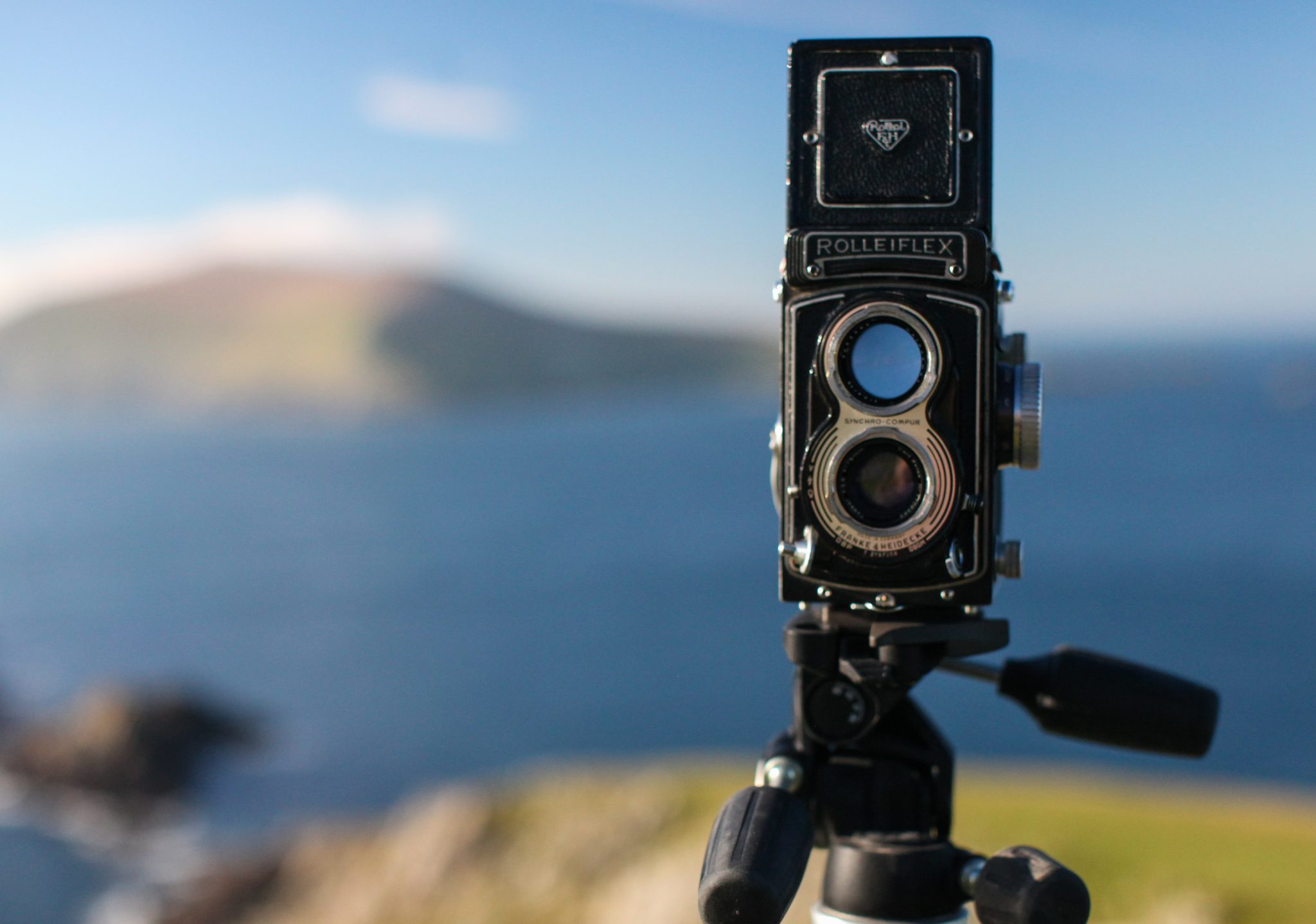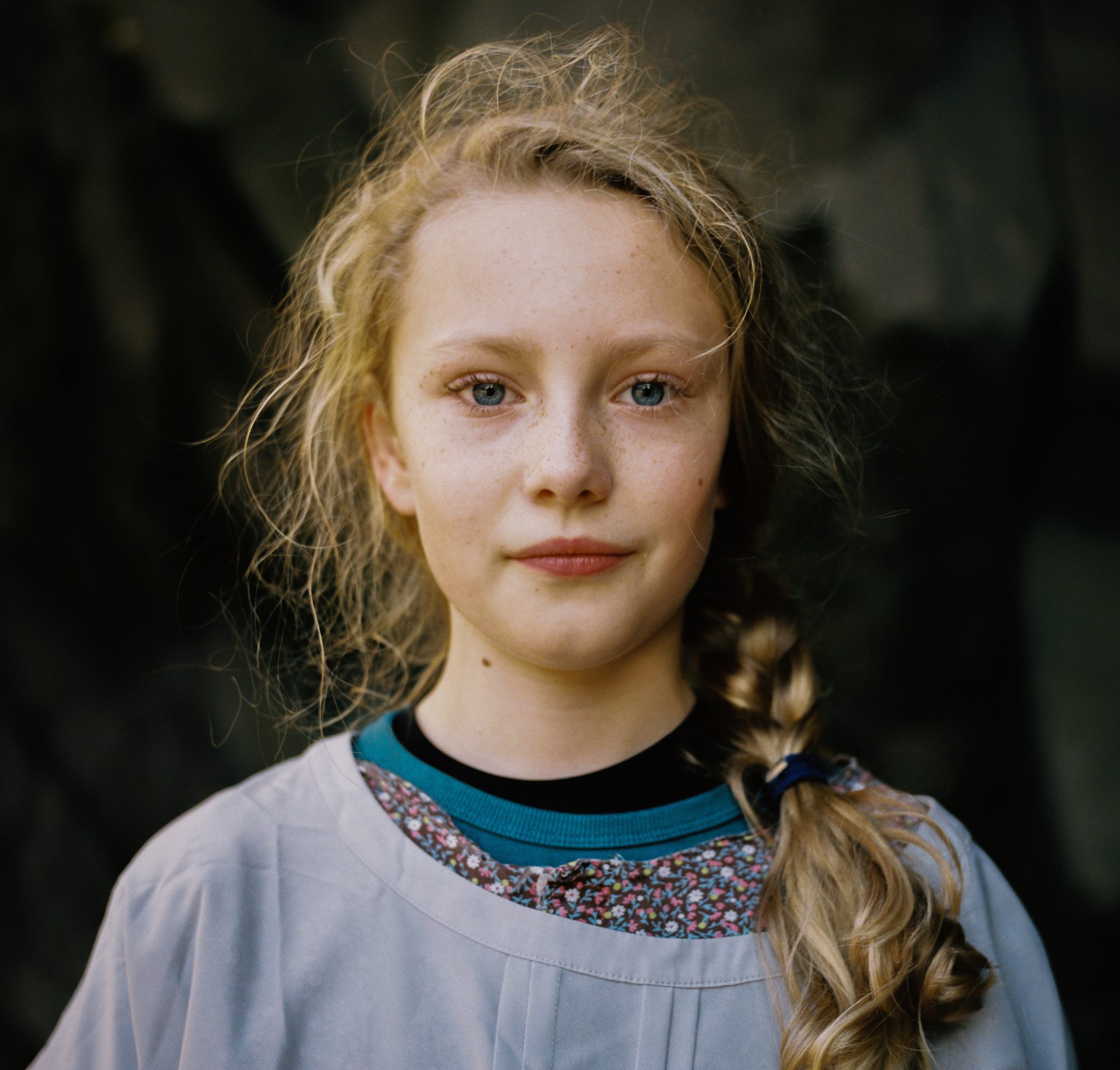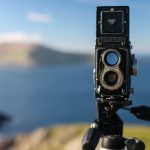While shooting a documentary film about the Blasket Islands in South West Ireland I had an opportunity to shoot stills on film, for the first time in more than 2 decades. The documentary (which can be seen here) focuses on life on the Blasket Islands in the first half of the twentieth century and we wanted to create some imagery that felt it belonged in that era, so chose to shoot stills on Kodak negative film with a Rolleiflex. In the past I was a huge film enthusiast, but as the quality of digital stills and video has improved I’ve become sceptical about the ‘magic’ of film and convinced that just about any ‘look’ can be effectively reproduced through digital capture. Going back to film I was reminded just what a tough medium it is; eeking out 12 precious shots from a roll. In the end I was surprised to find myself seduced by film. Compared to a digital still the film image seems to have a distinctive texture, contrast range and colour response, giving it a ‘painterly’ quality – well worth the effort.
Shot with a Rolleiflex T on Kodak Portra 400. Click here to see the full size image, or below you can see a direct comparison between a digital shot (on the right, taken with a Canon 5D Mk II) and the film shot.





 Yoho Media
Yoho Media